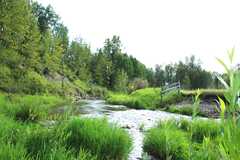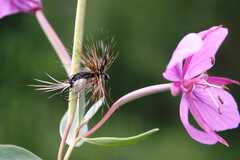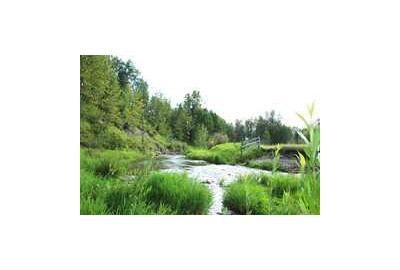For the entry-level, first-timer flyfisher, dipping the toe of his/her wading boot tentatively into the water, the learning curve can be steep and intimidating.
Gear, knots, casting, where to go, how to read the water when you arrive streamside, the challenges seem endless at times.
And nothing is more bewildering when you arrive at the well-stocked fly shop and are confronted with dozens in not hundreds of bins on the fly table.


The choice is overwhelming and daunting. All you want to do is go fishing, catch a few trout and break the ice.
Fly tying has become a growth sport in its own right and the number and variety of flies on the market and featured in on-line videos is only limited by the tyer’s imagination.
So many choices so little time.
Another high hurdle to overcome is the confusing and confounding world of flyfishing entomology.
The idea that somewhere in the fly boxes in your vest or fanny pack there’s an artificial close enough to the bugs on the water that will fool a fish into eating it.
Mayflies, caddisflies, stoneflies, a whole range of terrestrials. And another new suite of insects when it comes to stillwaters.
We’ve all seen that grizzled old guy in a school gym, neighbourhood pond or sports field, wearing a sun-faded fishing hat, teaching a struggling class of fly-fishing newbies the 10-o’clock-2-o’clock casting arc.
And a look on the old vet’s face that says, why can’t they get it. Because, partner, there’s a lot to get.
Flyfishing is a sport where you never stop learning. But getting to the first level requires a little bit of knowledge in a range of areas.
To help rookie angler get to first base and begin the livelong fly-fishing journey here’s a six pack of flies to help kick-start their hopefully long and rewarding career.
Welcome to the beautiful deception.
Humpy
Matching the hatch and exact imitation became the state of the art in the middle part of the last century and has pretty well persisted until today. So that flyfishers wouldn’t dare venture out on some of the popular and heavily-fished Colorado tailwater rivers without at least half dozen different versions of a Blue-winged Olive mayfly tied down to a microscopic size 22 before the finicky trout will give them a second glance.
Like I said, intimidating.


That’s where you may end up in your fly-fishing life journey. But to begin it there’s a range of flies that imitate everything and nothing. But are close enough to a lot of insects that the trout, whitefish and grayling ignore their inconsistencies and eat them anyway.
One is the ubiquitous Humpy dry fly– sometimes called a Tom Thumb or a Deer Hair. Mainly because the number one ingredient of this pattern is the natural tan/brown body hair of a whitetail deer.
Starting with a bunch tied on at the tail, pulled over the body forming the “hump”, then tied up-right to form a bushy wing. The body material can be tan, brown, black, yellow and even Royal Coachman red and peacock.
Add a hackle of brown, ginger, grizzly or blue dun and you’ve got a high-riding fly that represents a number of streamborn insects ideal for exploring the runs and riffles of a foothills trout stream or boreal grayling creek on a sunny summer afternoon.
Gold-ribbed Hare’s Ear
Trying to match an artificial fly to an insect bobbing down the dazzle and foam of a fast flowing trout river can be a challenging task to say the least.
But how about a bug that you can’t even see.


Trout receive most of their nourishment from the larva and pupa stages of the water insect’s life cycle – known as “nymphs” to flyfishers.
Stream insects spend most of their lives in these forms – buried in the bottom silt, clinging to rocks and sometimes drifting in the current where they are eaten by the opportunistic fish.
Precisely imitating them with a fly can be a daunting task.
But a fly call the Gold Ribbed Hare’s Ear is a reasonable match for a lot of them.
This fly is as old as fly-fishing itself and made the trip across the pond from Britain originally as a wetfly but was adapted to a nymph tie.
As the name suggests it’s chief component comes not from the ear but the skinned head of a cottontail rabbit which presents the flytier with a full spectrum of brown, tan, black and mottled hair choices to be spun or “dubbed” onto the tying thread.
Often a tail and wing case of cock pheasant tail fibres is added to the tie. Plus a bead head or legs by pulling back the pheasant fibres and tied off to enhance the Hare’s Ear’s buggy look.
This fly can be fished down and around in classic wet fly style, dead drifted under a strike indicator or “high sticked” in the technique called “European nymphing.”
Woolly Bugger
The Woolly Bugger is another representable fly that should have a prominent place in all beginning fly-anglers boxes.


This bushy, palmer-style fly with a seductive, pulsing marabou feather tail can imitate a host of large nymphs, forage fish and leaches. Or maybe simply present itself as an annoying intruder in a trout’s cone of vision and safe place that needs to be wiped out.
Whatever the distraction, it can prove deadly when allowed to swing down and around or cast and stripped back in a stillwater or slower reach of a river.
The Wooly Bugger’s attractiveness transcends trout and can be just as effective on other top-of-the-food-chain predators like pike and walleye.
A good start is a black-on-black Bugger. But the number of other colour combos is as wide and varied as the fly-tiers’ imagination and are available in several different configurations in most quality fly shops.
It can also by equipped with several weighting adaptations such as internal wraps, bead heads, cone heads, barbells or glue-on eyes.
Stimulator
The invention of the Stimulator is generally credited to Oregon fly tier Randall Kaufmann and has become a staple of most fly box selections.
Does it represent an adult, egg-laying stone fly, a caddis fly, a struggling grasshopper or just something tasty that comes sailing down a trout or grayling’s feeding lane to be eliminated at all cost? Who knows for sure.
Which is the mystique of Kaufmann’s invention.


The classic tie is with a yellow body, orange head, ginger then grizzly hackles and a brown deer-hair wing to possibly represent a mature golden stonefly.
But like many flies it has morphed into a wide range of variations and combinations.
During stonefly season on many Alberta Front Range rivers, when the big, clumsy bugs are buzzing the stream surface depositing eggs, the commotion created can be duplicated by allowing the fly to “wake” across the current.
The strikes, when they come, can be vicious and heart-stopping.
Chernobyl Chubbie
This fly represents a whole new line of flies tied with non-traditional materials to represent several terrestrial insects like ants, beetles and, most of all, grasshoppers.
Or simply a non-descript food item that’s tempting to a trout.


It derives its sinister name from the infamous Chernobyl nuclear power station in northern Ukraine which, under Russian neglect, when critical in 1986, spewing massive amounts of radio-active material into the atmosphere.
And as the legend goes, it may or may not have created mutant organisms. Which the Chubby series supposedly represents to the fly-fishing world.
The materials are high density foam, shaped bodies and rubber legs creating a virtually unsinkable dry fly with highly mobile appendages.
Sometimes a pink or neon-green hot spot of synthetic yarn or foam is added to the fly’s topside to increase visibility – adding to it surreal appeal.
The hopper Chernobyls are tied as a foam sandwich with colours representing the variations of a grasshopper’s body.
While the legs come in a selection of colours and textures too.
Because of the nature of the body material the Chubby has extreme buoyancy – mitigating against one of the beginner anglers constant conundrums.
How to keep the darned thing floating.
Lefty’s Deceiver
Maryland fly-tier Lefty Kreh invented the Deceiver fly that bears his nickname as a saltwater pattern for striped bass in Chesapeake Bay.
No stripers here, of course. But it has proven to be a lethal lure for toothy predators like pike, walleye, bull and lake trout.


Adding this streamer-style fly to a beginning anglers fly box is a cosmic way of expanding fishing opportunities beyond the typical cold-water creeks, rivers and stocked trout ponds.
While the fly’s whitetail deer tail-fibre wings are similar to many other “streamer”-style ties designed to imitate bait fish like baby perch, tullibees and shiners it’s the composition of the tail that separates Lefty’s fly from the rest.
The tie calls for two clusters of three saddle or long neck-hackle feathers tied on each side of the hook bend.
The feathers must be arranged so their natural curve points outward.
Creating an irresistible pulsing sensation when the cast fly is brought in with an erratic strip-strip-pause retrieve.
A weighted head not only gets the fly down to the strike zone quicker but it gives the lure an added seductive jigging action – further inducing strikes.
Deceivers come in the full palette of pike colours – chartreuse and white, green and black, blue and white and the legendary Five O’ Diamonds red and yellow.
And don’t forget black and purple which can be deceptively deadly at times
Obviously there are an unlimited number and variety of fly patterns out there. And several more were likely invented while reading this article.
But the hardest part about getting started as a flyfisher is the starting part.
These six flies, that don’t attempt to exactly imitate the fishes’ food sources, but present a fairly good facsimile of a lot of them, should get introductory anglers off to running start.
Now they only have a lifetime to go to learn the rest.




